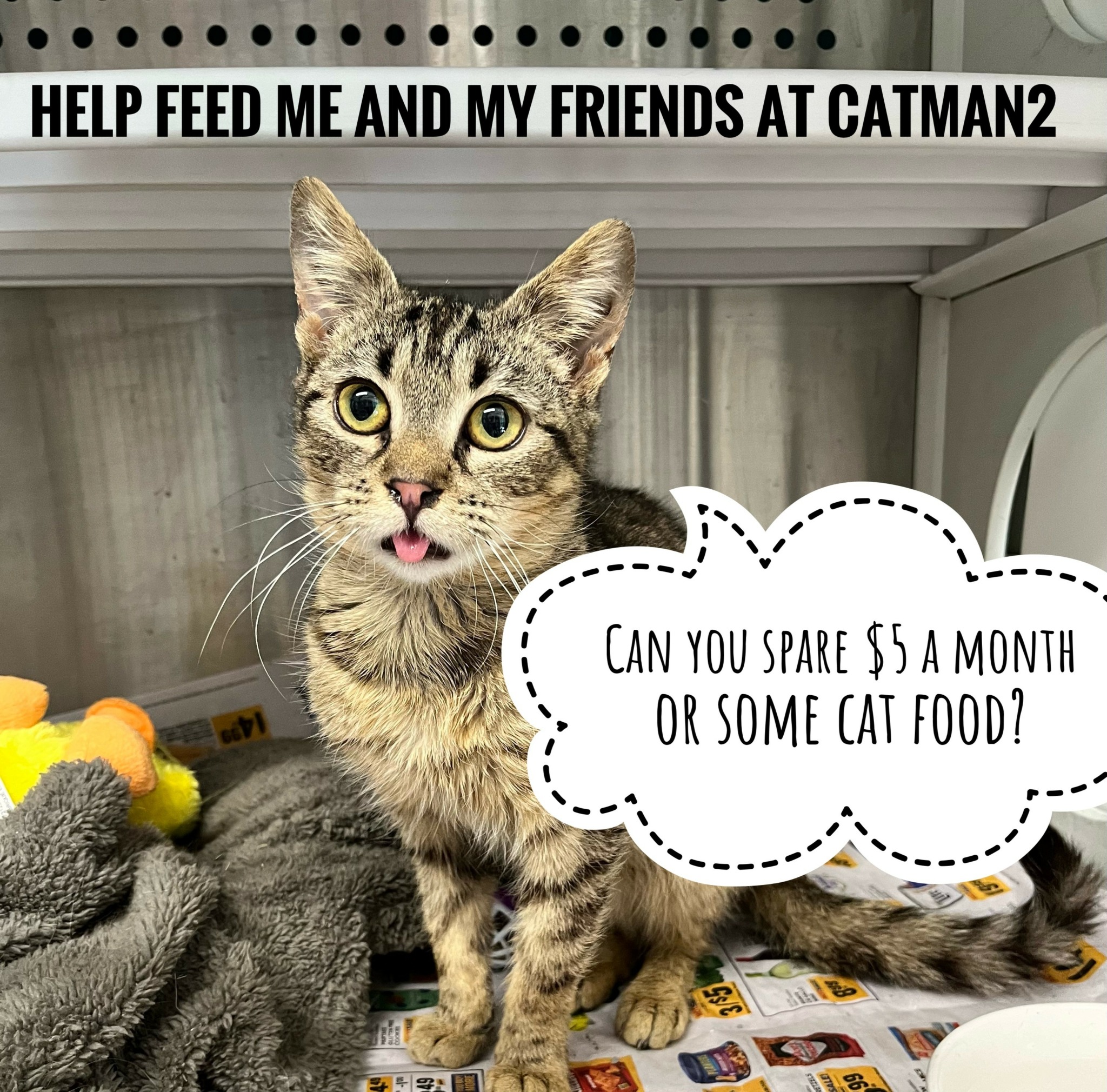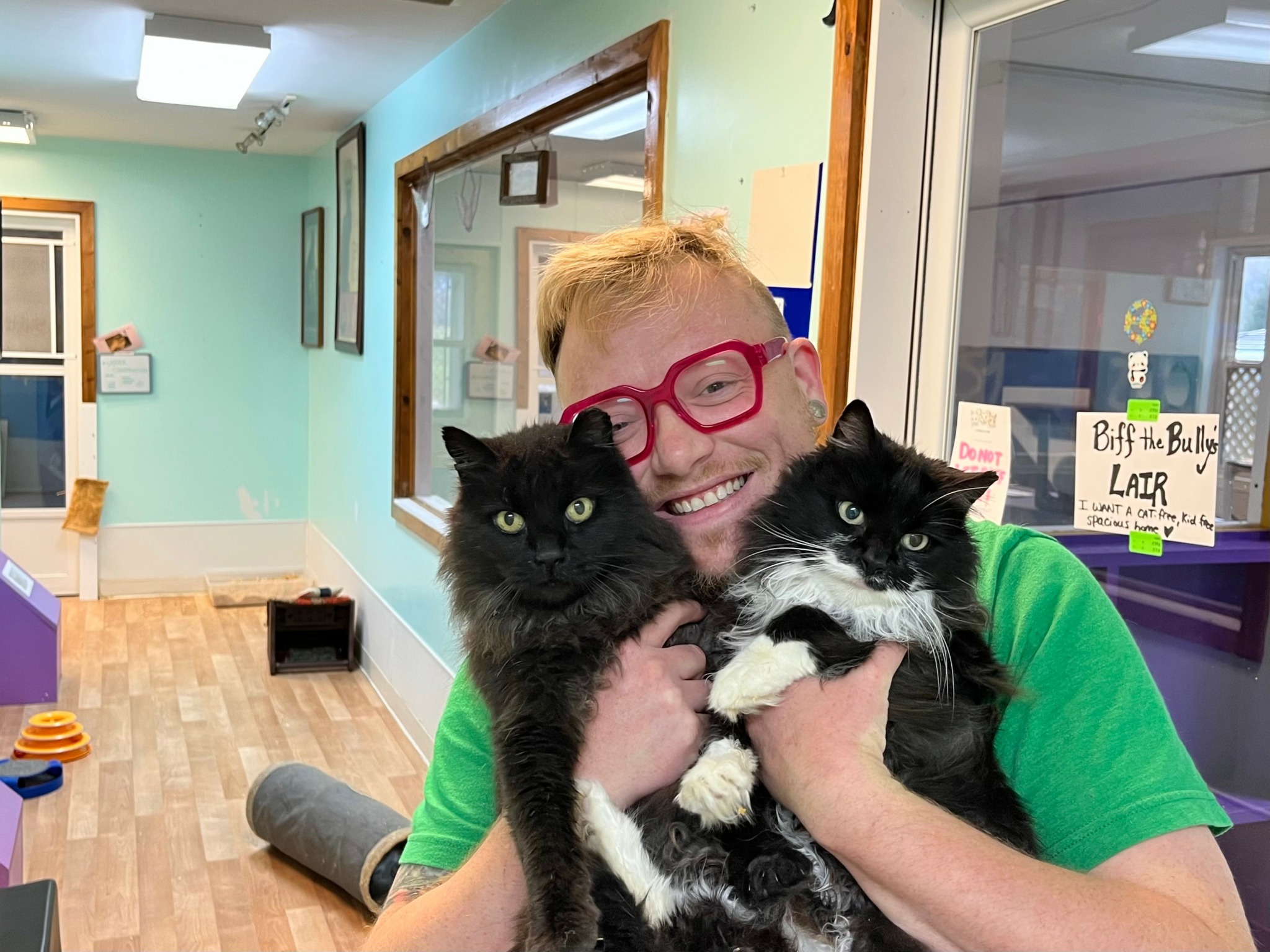We caught up with the brilliant and insightful Kaleb Lynch a few weeks ago and have shared our conversation below.
Kaleb , appreciate you joining us today. Has your work ever been misunderstood or mischaracterized?
Unfortunately, the animal welfare and animal sheltering industry is widely misunderstood and mischaracterized. People think I get to play with cats all day but that’s the farthest thing from the truth. I wish I had more time to play with and enjoy them, but my job as the executive director of a cat rescue shelter entails wearing many hats – all the hats, really. I am responsible for fundraising not only for veterinary expenses, but for a ton of overhead expenses like keeping the utilities on, paying for insurance and accounting and the technology that helps us fundraise, manage donors and inventory, etc. I clean toilets, engage with donors and followers, bookkeep, do repairs and maintenance and even renovations, and do all kinds of in-house medical tests, vaccines, injections, medications, wound care… I even played midwife for the day recently when a pregnant stray was in distress. There’s less than a moment to sit and relax at any time.
There’s also this terrible trope of those who work in municipal, open intake shelters or “kill” shelters as many people still callously call them. Some of the most amazing, dedicated colleagues I’ve ever met work or worked in shelters in which they are forced to euthanize. Ignorant people and organizations will latch onto that as if it is all those workers do and to suggest they enjoy it or that these people are heartless killers is so ludicrous and kills their spirits. I will always advocate for these people and for changing the language we use to describe animal sheltering.


Great, appreciate you sharing that with us. Before we ask you to share more of your insights, can you take a moment to introduce yourself and how you got to where you are today to our readers.
I grew up in a house full of animals with parents who were passionate about being responsible pet owners and rescuing animals. I think I would have probably gone into veterinary medicine had I felt I was smart enough, but unfortunately my self-confidence was really lacking. So I went to school for psychology and planned to go into crisis intervention because above all else, I was (and still am) a helper. After doing an internship at a rape crisis center, I discovered that this was not something I really wanted to do as a career. I was pretty lost after that, settling for working retail and trying to figure out my place.
My best friend and I moved into a “quaint” (read: hole in the wall) cabin and thanks to irresponsible neighbors, we soon had feral cats coming around. One of them I was very fond of. She was solid white and had been around for a while. She had babies in that neighborhood for years but was too fearful of humans to allow anyone to touch her. Until one day, she brought her babies up to the house to eat and I noticed she was limping. One of her front paws had two punctures on it and it was turning black. How could I help her without touching her? It got so bad I reached out to our local animal control, and the woman working said that all ferals had to be trapped and euthanized because they couldn’t be adopted if they were wild, which made sense, but made me sad nonetheless. She convinced me it would be a kinder thing for the poor white kitty to be humanely euthanized than suffer with this terrible infection. So I allowed her to come to the house and set traps. A few cats got in them first, but one day when I was late for work, I saw the woman carrying a trap to her truck containing the white kitty. I got down on my knees and started crying, begging her to let me keep the white kitty and that I would take her to the vet that same day if she would just bend the rules for me just once. She was worried about potentially being fired but couldn’t stand to see a grown man cry and made me swear I would not tell on her and that I would get the cat vaccinated immediately. I hugged her and thanked her and said I would start volunteering at the animal shelter on my days off to repay her for helping me.
True to my word, I took the white kitty to the vet and boarded her for a few days until they could spay her. I spent my rent money on her care. I had two dollars to my name after I was done with getting her the treatment and veterinary care she needed. When she got back from the vet and was let out of the cage, she let me kiss her forehead and even pushed back against me. I was smitten.
I started volunteering at the shelter, working with the cats since most volunteers wanted to walk the dogs. This was a sad era of animal sheltering in 2010. Our rural mountain shelter was euthanizing on a daily basis and there were new cats in constantly with very few adoptions. I started trying to market the cats for adoptions and got attached to some who did not live to see adoption day. It wasn’t the fault of the workers; it was the community and the culture that viewed animals as being more disposable. I wanted to change that but I didn’t know how. Soon my shelter friend asked if I would like to volunteer with her at the Catman2 shelter on the weekends. I agreed and one day a week snowballed into two days a week, into every day after work, into moving to a rental on the property, into being asked after a year of volunteering if I would like to work there as the manager. It was a huge leap for me but I decided to take it. Working with the animals was the one thing that didn’t make me feel lost or out of place.
I started my new job in August of 2011. We pulled so many cats from animal control and they had to euthanize a lot less, but it was still a persistent issue. Eventually we partnered with the local dog rescue to get a free spay/neuter grant and it was at that point we started seeing a huge change in the community, the animal shelter, the euthanasia rate, and just the overall culture around animal welfare. We latched onto that change and have kept up the momentum and advocacy for our local animal shelter. I am so proud of our life-saving partnership.


Learning and unlearning are both critical parts of growth – can you share a story of a time when you had to unlearn a lesson?
I have had to unlearn that my personal way of caring for my animals is not the only way, and others who do it differently are not necessarily bad pet owners, irresponsible, or don’t love their animals.
I deal with all sorts of people every single day. I have seen millionaires surrender their cat because they remodeled and the cat didn’t match their furniture anymore… and I’ve seen people with a negative bank balance sell belongings and scrounge for spare change to buy cat food for their feline friend. I see both callousness and compassion in all socioeconomic groups. Being broke does not mean you love your pet any less. Being rich does not mean you love your pet any more. Being homeless doesn’t mean you’re a bad pet owner or don’t deserve your companion animal.


How about pivoting – can you share the story of a time you’ve had to pivot?
There have been times in which we have had to pivot and reprioritize our goals. In particular, Western North Carolina suffered badly during Hurricane Helene. The water rose and swept away anything in its path. Our region is not used to or prepared for hurricanes as we live in the mountains no where near the coast. When that happened, everyone in our region was struggling. We had to change our routine and jump in and help the community. We did a lot less asking for money and a lot more helping folks with basic needs for their pets. We gave away pet food and supplies and litter, served as a supply collection spot, paid for veterinary care for struggling pet owners, collaborated with other agencies and did everything we could to help folks keep their beloved pets during a time of extreme need and uncertainty.
Contact Info:
- Website: https://www.catman2.org
- Instagram: https://www.instagram.com/catman2shelter
- Facebook: https://www.facebook.com/Catman2Shelter


Image Credits
Kaleb Lynch


